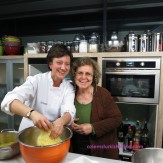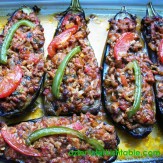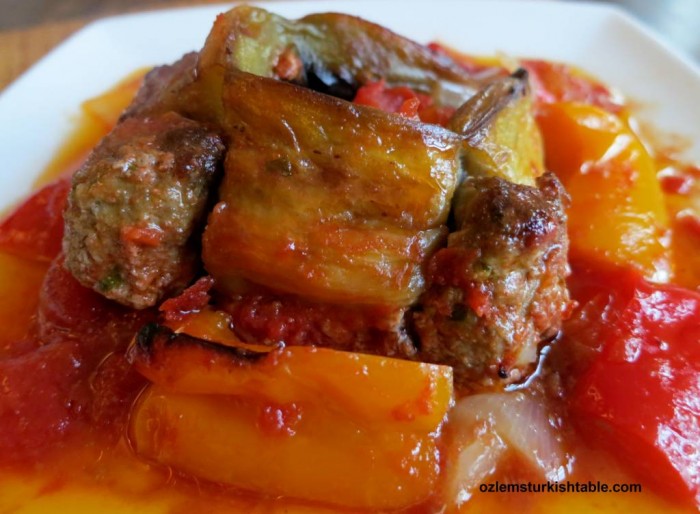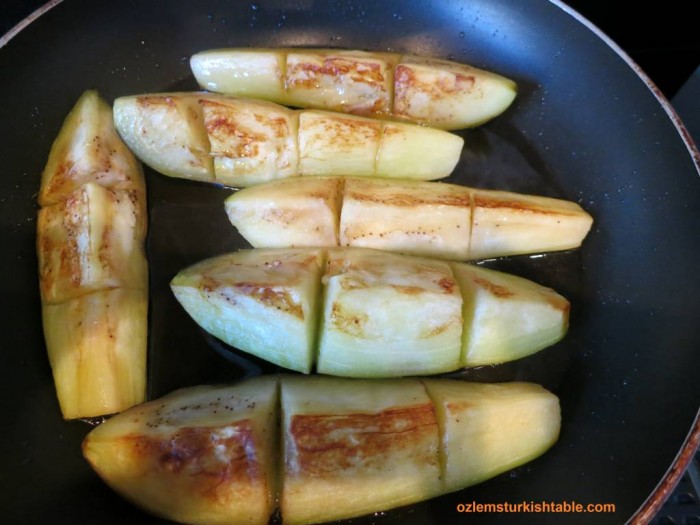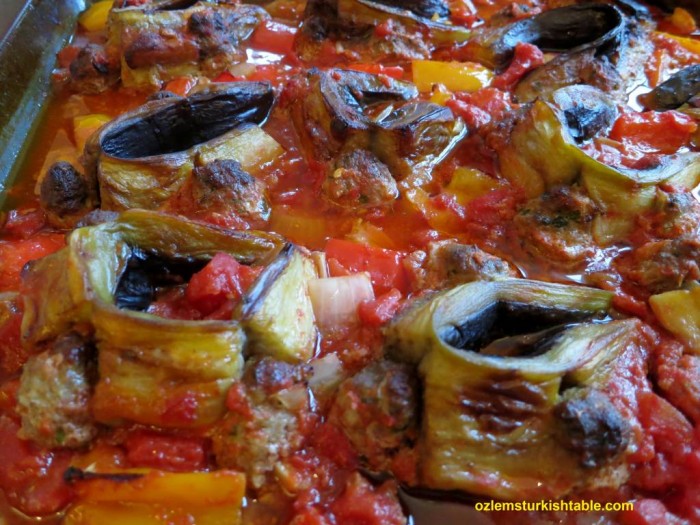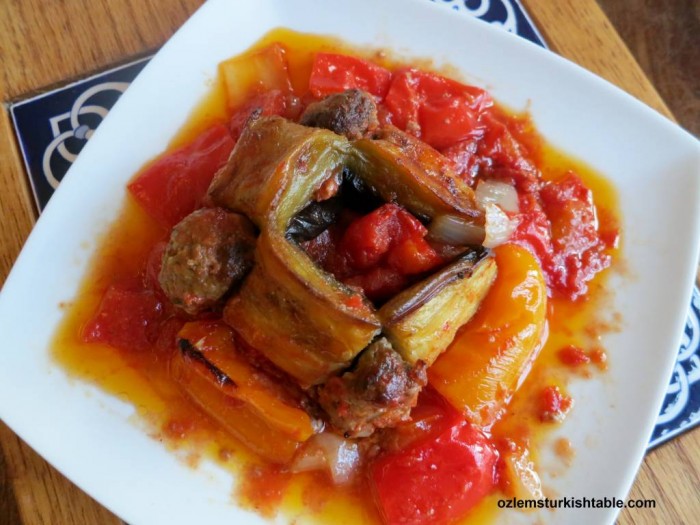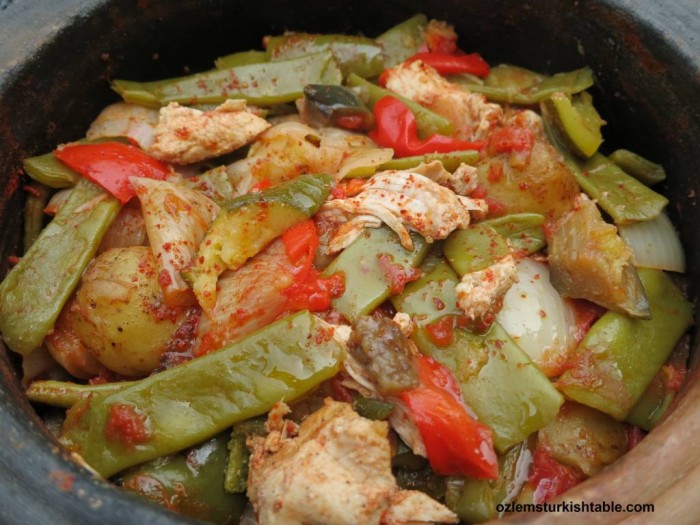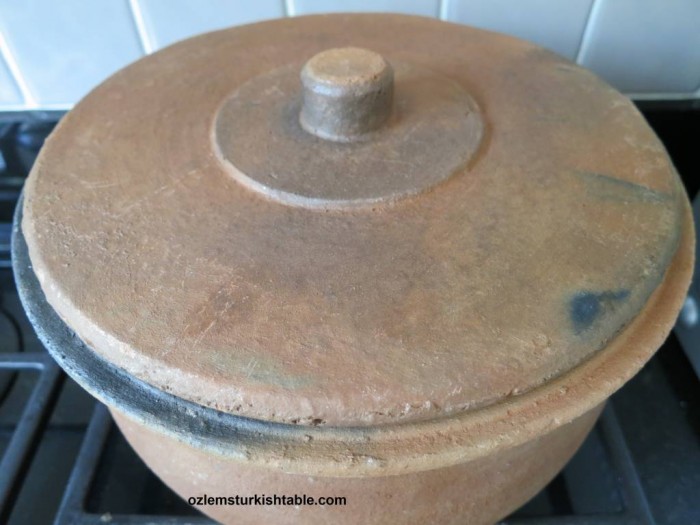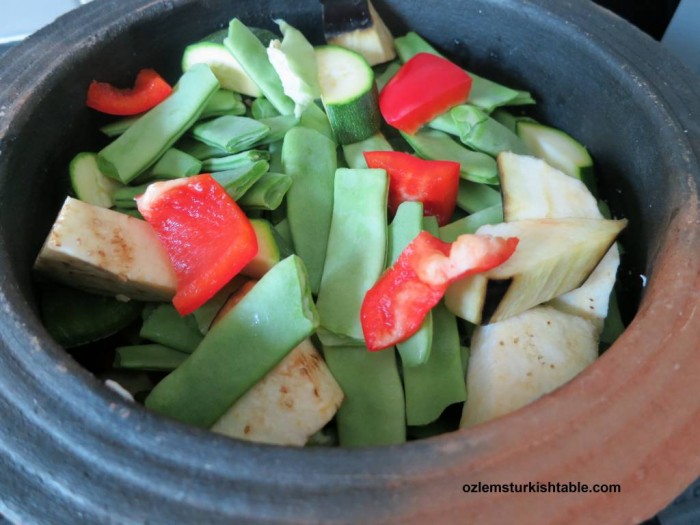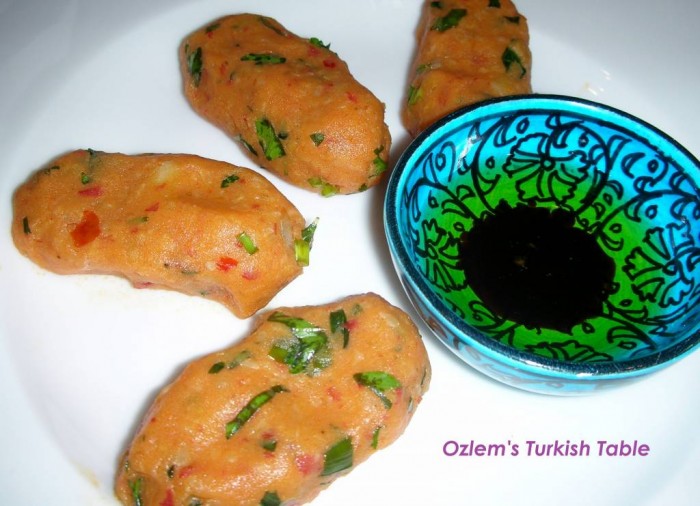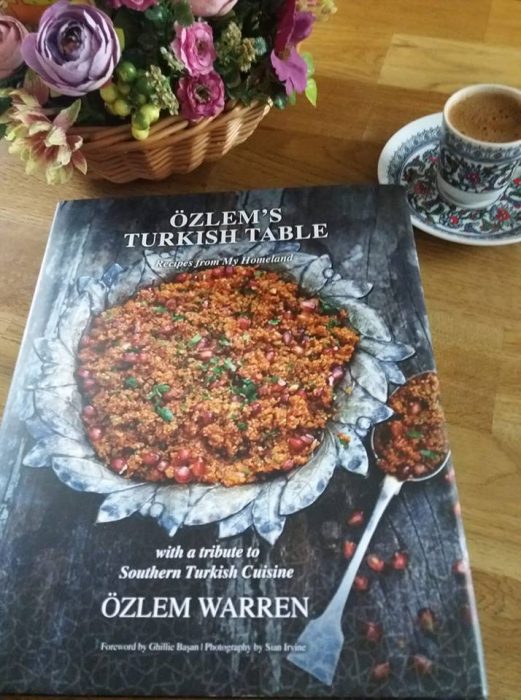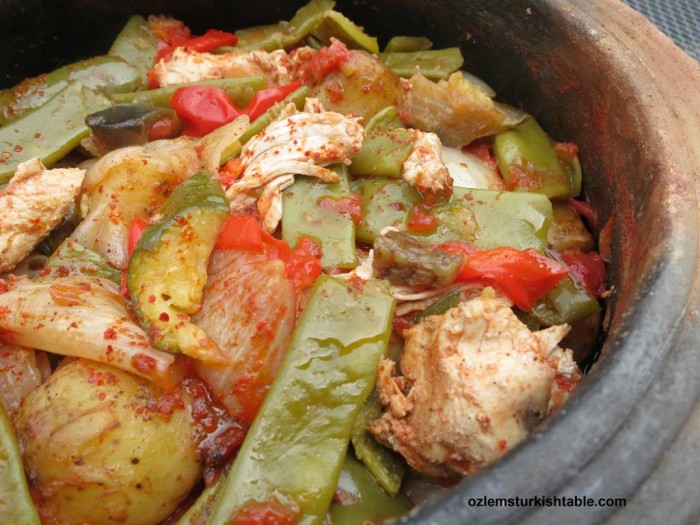Our national favorite Patlican, or aubergine or eggplants are appearing in the markets more now; I love its deliciously sweet, meaty flesh in mezzes, salads, casseroles, even in boreks, savory pastries. This recipe, bended eggplant slices with meatballs or Patlicanli beli bukuk, or Boynu bukuk as we call it, is a childhood favorite. Marriage of the delicate eggplant flesh with meatballs, baked in a delicious tomato sauce with peppers is simply heavenly. All you need is some crusty bread or rice aside and you are all set with a scrumptious, complete meal.
You need slim and long purple eggplants for this recipe, as they are first quartered lengthways and then each quarter are cut into deep splits (keeping the skin intact). Once the slices are shallow fried (or baked in the oven, if you prefer), they will soften and bend. If you are in Turkey, you can get those really slim and long eggplants, patlican, which won’t need cutting lengthways; you can just cut deep splits side ways and prepare the recipe.
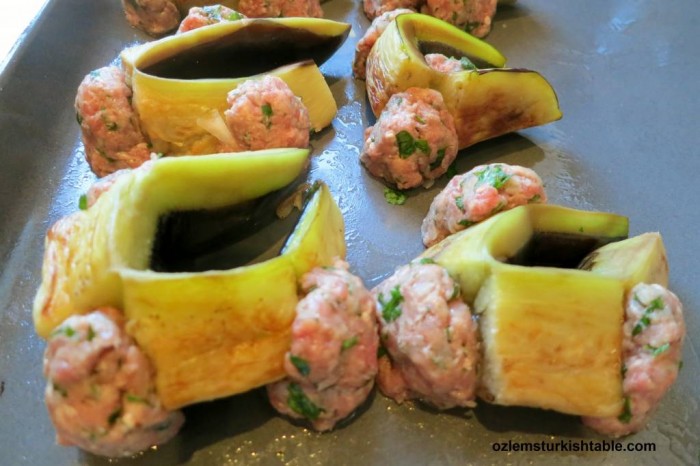
Gently bend the sautéed eggplant slices and insert the meatballs at the splits, gently push the meatballs in.
We then insert small meatballs, koftes to these slits, which will naturally bend the eggplants and hence comes the name; Patlicanli Beli Bukuk or Patlicanli Boynu Bukuk Kebab (Bended Eggplant Kebab). It may sound a little tricky to do, but it really is not; you will get the hang of it in a few tries. The meatballs cocooned around the eggplants cook deliciously in the juicy sauce with peppers and tomato sauce.
I hope you enjoy one of our favorite kebabs with patlican, eggplant. Cacik dip with yoghurt, cucumbers and dried mint would be delicious aside, so as this wholesome bulgur pilaf with almonds. I use biber salcasi, Turkish red pepper paste to flavor the sauce and it adds a delicious heat, if you like it too. If not, you can replace it with tomato paste.
Afiyet Olsun,
Ozlem
- 4 long purple eggplants/aubergines
- 2 bell or pointy peppers (green, red or yellow), deseeded, quartered and cut in chunky slices
- 1 onion, coarsely chopped
- Light olive oil or canola oil to shallow fry the eggplants
- 4 – 6 garlic cloves, chopped
- 15 ml / 1 tbsp. Turkish red pepper paste, Biber salcasi or tomato paste
- 60 ml/4 tbsp. water to dilute pepper paste or tomato paste
- 400 gr/14 oz. can of chopped tomatoes
- 30ml/2 tbsp. olive oil
- 16 fl oz. / 2 cups of water
- Salt and ground black pepper to taste
- Kofte/Meatball ingredients:
- 400 gr/14 oz. ground beef, lamb or mixture
- 1 onion, finely chopped or grated
- 1 slice of slate bread (white or brown), soaked in a bowl of water
- 1 egg, beaten
- Handful of flat leaf parsley, finely chopped
- Salt and ground black pepper to taste
- Preheat oven to 180C/350F
- Cut the stalk of the eggplants and slice in half lengthways. Then cut each slice again in lengthways, you will get 4 long quarters per eggplant.
- Then cut each eggplant quarter into 3 -4 deep splits (keeping the skin intact), depending on the length of the eggplant.
- Sprinkle salt over the flesh side of the eggplants and leave them aside for 15 minutes. Salt will help the moisture and the bitter juices come out of the eggplants. Dry the eggplants with kitchen towel thoroughly afterwards.
- To prepare the meatballs, soak the stale bread slice in a small bowl of water then squeeze dry. In a large bowl, combine all the kofte, meatball ingredients except the meat and knead well. That will help soften the onions and blend the ingredients homogenously. Stir in the ground meat, season with salt (about 1 - 2 tsp.) and ground black pepper to your taste. Knead for a good 3-5 minutes with your hands, until the mixture becomes elastic and mixed well. Cover this mixture with a cling film and rest in the fridge for 15 minutes (or a little more, if you can).
- While the meatball mixture is resting, prepare the eggplant quarters. Pour in 2 tbsp. light olive oil or canola oil in a heavy pan and lightly brown the eggplant slices for 2-3 minutes. You may need to top up with light olive oil if you’re shallow frying (Alternatively, you can bake the eggplant quarters in the preheated oven at 200 C, for 20 – 25 minutes. Make sure the tray and the eggplants are greased with olive oil before baking). Place the sautéed eggplant quarters on a large tray and set aside.
- Shape the meatball mixture into walnut sized meatballs. Gently bend the sautéed eggplant slices and insert the meatballs at the splits, gently push the meatballs in. You will insert 3-4 meatballs into each eggplant slice.
- Carry on until all the meatballs are inserted into the splits of the eggplants. If you have any meatballs left over, you can place them in the middle of the bended eggplants with meatballs or you can place them around the tray.
- Place the eggplants with meatballs in a baking tray.
- Spread the chopped onions, garlic and peppers around and stir in 2 tbsp. olive oil over these vegetables and gently mix with your hands.
- Pour in the chopped tomatoes around the tray.
- Dilute 1 tbsp. pepper paste, biber salcasi or tomato paste, with 4 tbsp. water in a small bowl. Pour in this mixture over the tray too.
- Stir in 16 fl oz. / 2 cups of water over the tray and season with salt and freshly ground black pepper. Combine well.
- Bake, uncovered for 40 – 45 minutes or until the meatballs are cooked and meatballs and vegetables start to brown. About 25 minutes into baking, check if more water needed in the tray. If so add another ½ cup of water, it is delicious to have some juice in this tray bake.
- Gently take out the squared eggplant slices with meatballs, using a large spatula. Serve hot with Cacik dip of cucumbers with yoghurt by the side. Plain rice or bulgur pilaf with almonds (recipe available in my blog) also goes well with this eggplant & meatball kebab.


